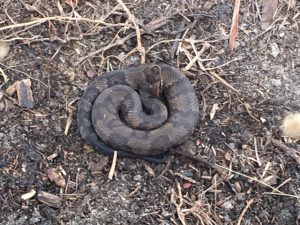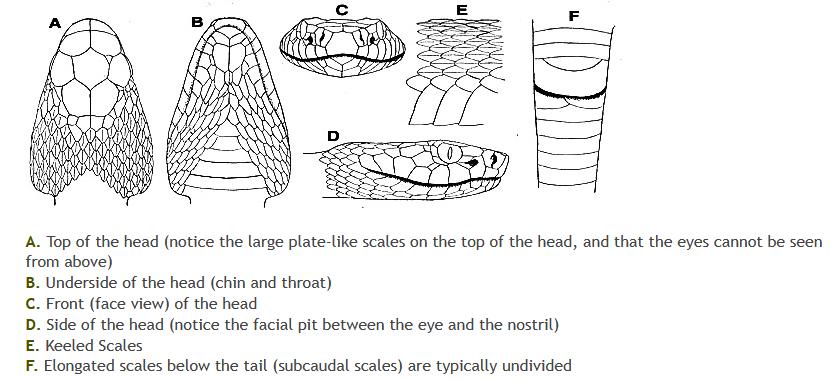
There seems to be no neutral ground when it comes to snakes. Folks fall into one of three categories: snake haters (“the only good snake is a dead snake!”), snake lovers (the type who kept a pet snake as a kid or seek them out in the woods), and those who appreciate their larger role in the ecosystem but would prefer to keep their distance. Even within our Extension office, we have members of all three camps. Living in Florida, though, it’s important to be familiar with the snakes we have living around us.
Recently, I joined my co-worker Rick for a “Science Hour” program on cottonmouths, aka water moccasins. While many people associate these snakes with freshwater rivers and other wet areas, we discussed and located them on a barrier island, 100 yards from saltwater. The snake’s scientific name, Agkistrodon piscivorus, gives us a bit of insight into the species’ favorite food. Cottonmouths are piscivores, or fish-eaters, hence their affinity for water. They do prefer slower-moving water and will rest on low tree branches.
If you happen to step near a cottonmouth, it will usually freeze. Next, it will try to warn you away. It might rattle its tail in the leaves as a show of intimidation or open its large mouth to flash the bright white insides. These snakes are venomous, but rarely strike unless truly threatened. Like other vipers, they have a triangular shaped head that is wider than their narrow neck. They have elliptical eye pupils, and keeled (ridged) scales that are rough to the touch. Their banded scale pattern can range from brown and black to a reddish copper or mostly black.


The banded water snake is nonvenomous bystander often mistaken for a water moccasin. Brown and black, often seen swimming on the surface of rivers, it shares a similar habitat. However, this snake has round pupils and a thumb-shaped head that is no wider than its body.
To avoid unexpected encounters with venomous snakes, always be aware of your surroundings. When hiking, periodically look down and pay attention to movements on the ground. Wear long pants and high boots when walking through brush or tall grass and stay on trails. Keep in mind that if you are taking measures to attract wildlife to your own property (fish ponds, brush piles, and bird feeders), these can also attract snakes to your yard.
Snakes play an important role in Florida’s environment, and they are fascinating creatures. By being aware and careful outdoors, you can avoid negative encounters with snakes but still experience the excitement of seeing wildlife in their element.
 0
0
